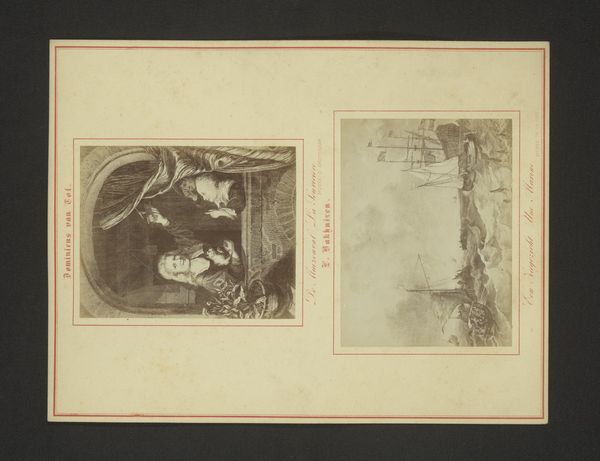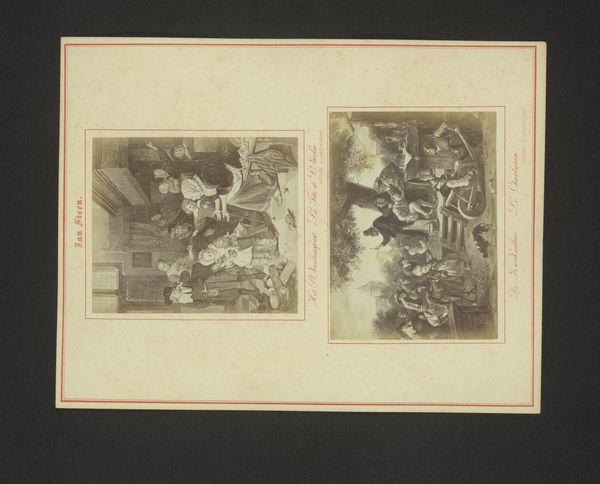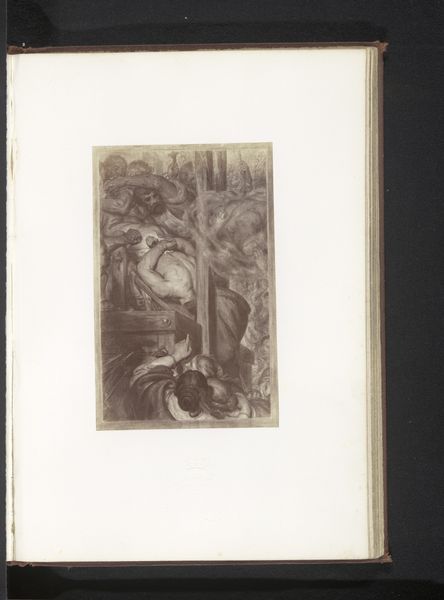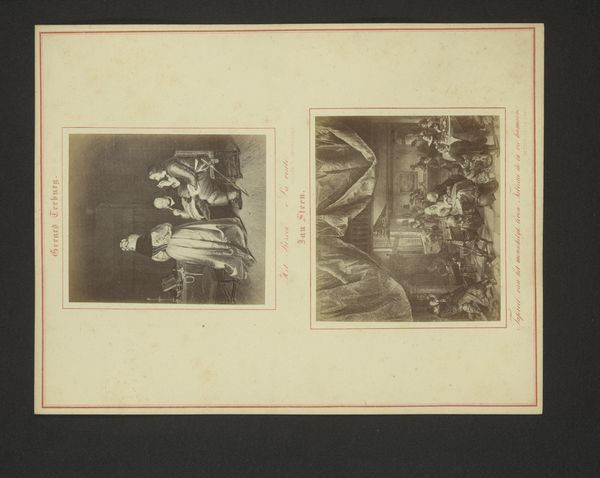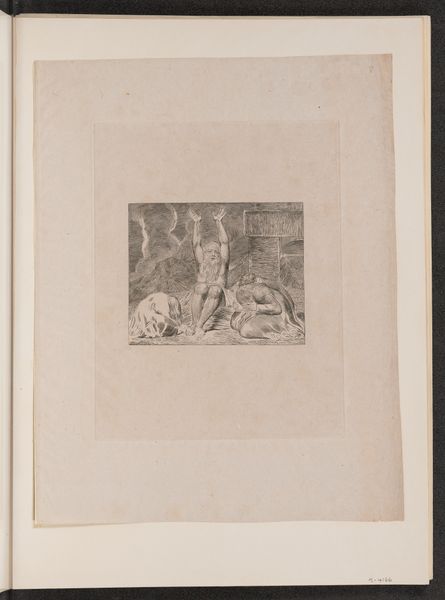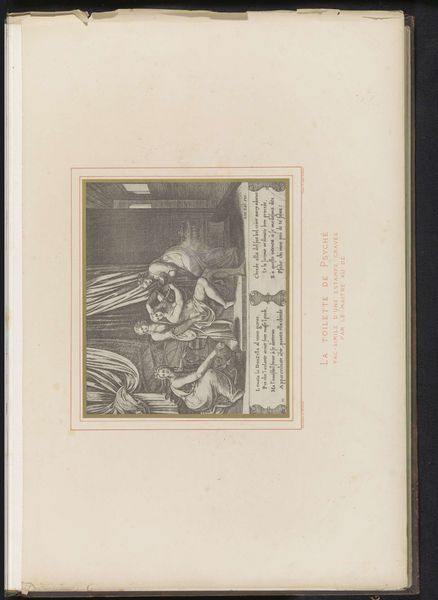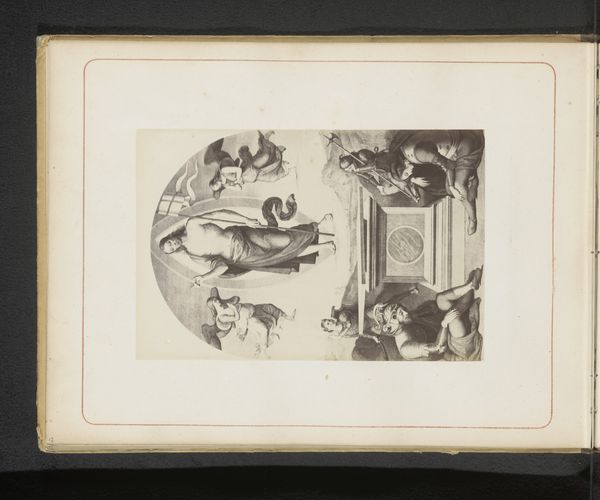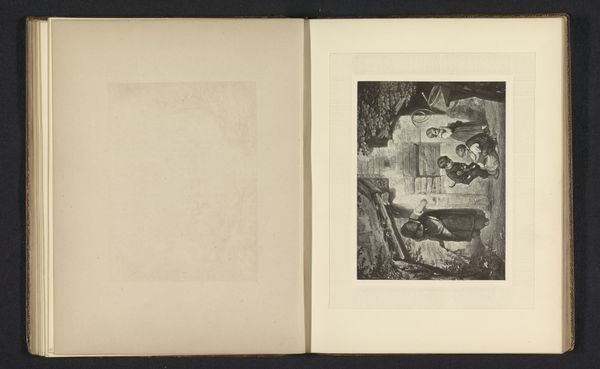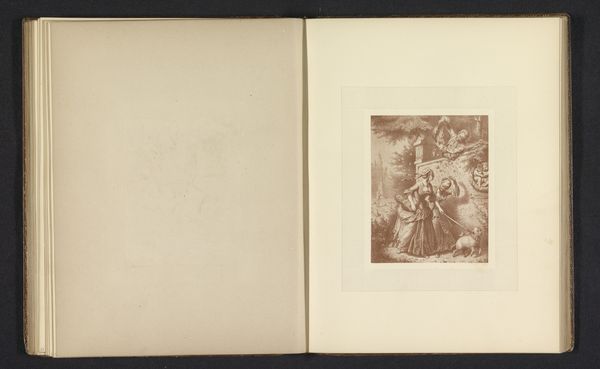
Fotoreproducties van De Boekhouder door Philip van Dijk en van Het spiegelende koetje door Paulus Potter c. 1866 - 1874
0:00
0:00
print, photography
#
portrait
# print
#
landscape
#
photography
Dimensions: height 120 mm, width 90 mm, height 85 mm, width 130 mm
Copyright: Rijks Museum: Open Domain
Editor: This is "Fotoreproducties van De Boekhouder door Philip van Dijk en van Het spiegelende koetje door Paulus Potter," created around 1866 to 1874. It looks like a photographic print featuring reproductions of two different artworks. I am intrigued by the combination of portraiture and landscape. What strikes you about this particular piece? Curator: The very nature of this artwork points to interesting developments in the art market of the time. Note that it is not an original painting, but a photographic print. We must then consider this photograph itself as the original art piece, and recognize that it depicts reproductions. Editor: Yes, it seems like the materiality shifts our focus. The subject isn't just the paintings being depicted but also the means of disseminating them. Curator: Precisely. Think about the socio-economic implications. Who had access to these images, and how did this form of reproduction democratize or perhaps dilute the aura of the original artwork? Editor: So, the accessibility through photography changes the artwork’s social impact compared to the original paintings which, at that time, would only have been available to wealthy people, if not royalty. I suppose what's missing for me is more information about its reception and intended audience back then. Curator: A crucial point. Archival material could unveil intended readership; we can see in these decisions surrounding materiality a shift towards mass consumption and the changing role of art in society. Considering its construction reveals much more than aesthetic choices alone! Editor: That is a whole new way of seeing, beyond just aesthetic value. It seems I learned to value how distribution changes our experience of the artworks. Thank you. Curator: Indeed, analyzing materiality allows a better appreciation for art's ever-evolving function within specific social strata. Thanks to you as well.
Comments
No comments
Be the first to comment and join the conversation on the ultimate creative platform.
